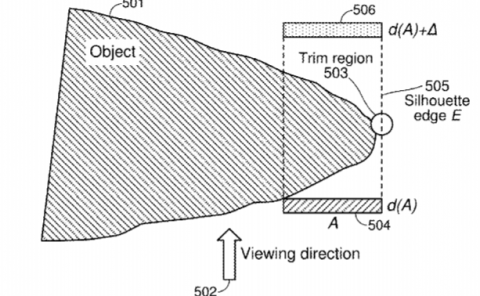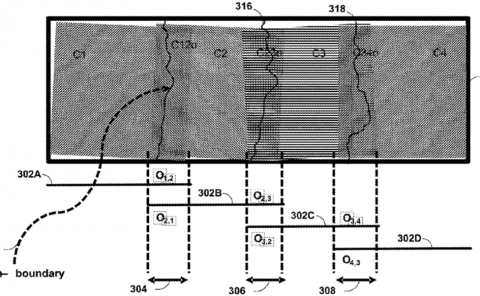Qualcomm Patent | Per-vertex variable rate shading
Patent: Per-vertex variable rate shading
Publication Number: 10192280
Publication Date: 2019-01-29
Applicants: Qualcomm

Abstract
A graphics processing unit (GPU) may rasterize a primitive into a plurality of samples, wherein vertices of the primitive are associated with VRS parameters. The GPU may determine a VRS quality group that comprises one or more sub regions of the plurality of samples based at least in part on the VRS parameters. The GPU may fragment shade a VRS tile that represents the VRS quality group, wherein the VRS tile comprises fewer samples than the VRS quality group. The GPU may amplify the stored VRS tile into shaded fragments that correspond to the VRS quality group.
Background
Computing devices often utilize a graphics processing unit (GPU) to accelerate the rendering of graphics data for display. Such computing devices may include, e.g., computer workstations, mobile phones such as so-called smartphones, embedded systems, personal computers, tablet computers, and video game consoles. GPUs typically execute a graphics processing pipeline that includes a plurality of processing stages which operate together to execute graphics processing commands. A host central processing unit (CPU) may control the operation of the GPU by issuing one or more graphics processing commands to the GPU.
Summary
This disclosure is directed to high quality variable rate shading (VRS) by a graphics processing unit (GPU). VRS includes rendering different regions of an image at variable pixel densities or level of details (LODs) to reduce the amount of data that needs to be processed, while minimizing the visual effect on image quality of the rendered image.
In one aspect, a method of VRS comprises rasterizing, by a graphics processing unit (GPU), a primitive into a plurality of samples, wherein vertices of the primitive are associated with VRS parameters. The method further comprises determining, by the GPU, a VRS quality group that comprises one or more sub regions of the plurality of samples based at least in part on the VRS parameters. The method further comprises fragment shading, by the GPU, a VRS tile that represents the VRS quality group, wherein the VRS tile comprises fewer samples than the VRS quality group. The method further comprises amplifying, by the GPU, the fragment shaded VRS tile into stored samples that correspond to the VRS quality group.
In another aspect, a device for VRS comprises a memory. The device further comprises at least one processor operably coupled to the memory and configured to: rasterize a primitive into a plurality of samples, wherein vertices of the primitive are associated with VRS parameters; determine a VRS quality group that comprises one or more sub regions of the plurality of samples based at least in part on the VRS parameters; fragment shade a VRS tile that represents the VRS quality group, wherein the VRS tile comprises fewer samples than the VRS quality group; and amplify the fragment shaded VRS tile into stored samples that correspond to the VRS quality group.
In another aspect, an apparatus for VRS comprises means for rasterizing a primitive into a plurality of samples, wherein vertices of the primitive are associated with VRS parameters. The apparatus further comprises means for determining a VRS quality group that comprises one or more sub regions of the plurality of samples based at least in part on the VRS parameters. The apparatus further comprises means for fragment shading a VRS tile that represents the VRS quality group, wherein the VRS tile comprises fewer samples than the VRS quality group. The apparatus further comprises means for amplifying the fragment shaded VRS tile into stored samples that correspond to the VRS quality group.
In another aspect, a non-transitory computer readable storage medium stores instructions. The instructions, upon execution by one or more processors, cause the one or more processors to: rasterize a primitive into a plurality of samples, wherein vertices of the primitive are associated with VRS parameters; determine a VRS quality group that comprises one or more sub regions of the plurality of samples based at least in part on the VRS parameters; fragment shade a VRS tile that represents the VRS quality group, wherein the VRS tile comprises fewer samples than the VRS quality group; and amplify the fragment shaded VRS tile into stored samples that correspond to the VRS quality group.
The details of one or more examples of the disclosure are set forth in the accompanying drawings and the description below. Other features, objects, and advantages of the disclosure will be apparent from the description and drawings, and from the claims.



